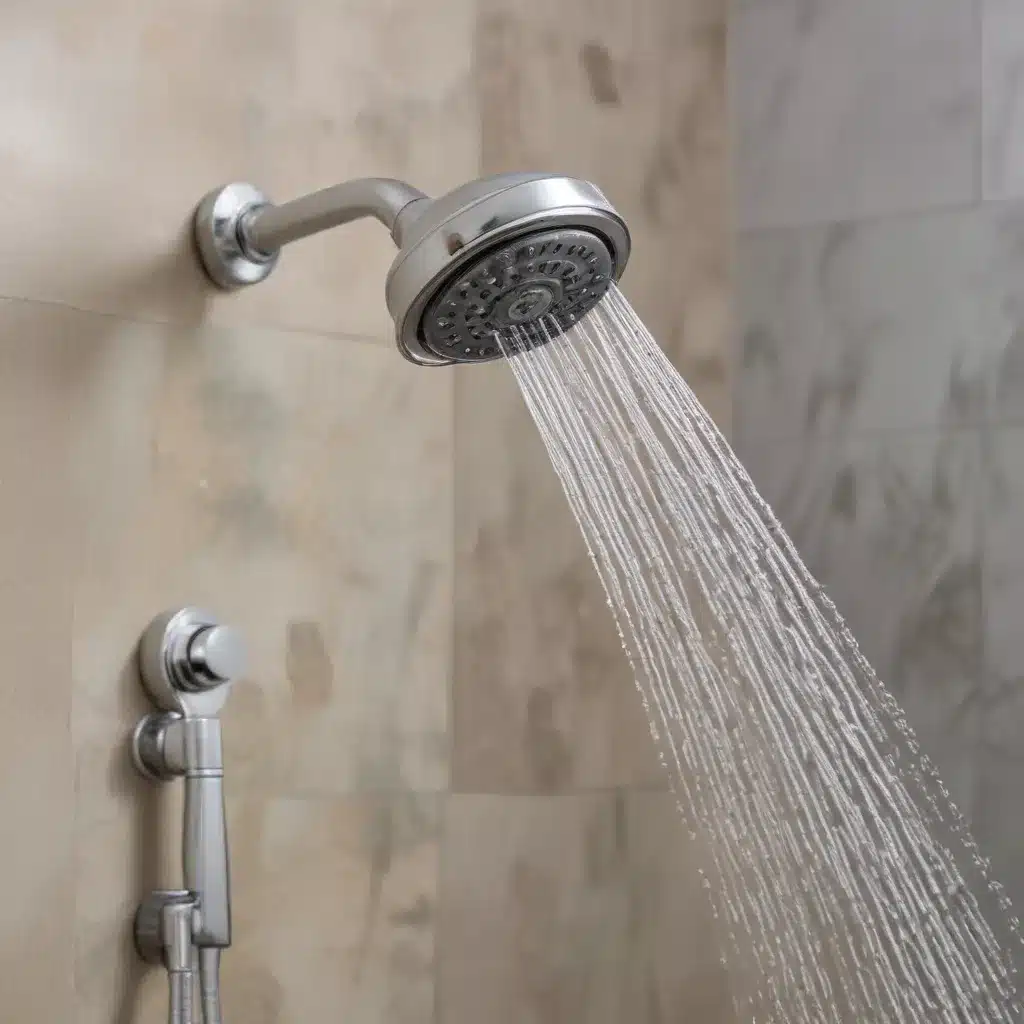
Understanding the Importance of Water Conservation
Water conservation is a critical priority for homeowners and plumbing professionals alike. As the effects of climate change and water scarcity become more apparent, finding ways to reduce water usage in our homes has never been more essential. Not only does water conservation benefit the environment, but it can also lead to significant cost savings on utility bills.
One of the primary areas of water usage in the home is the bathroom, particularly the shower. Inefficient showerheads and wasteful showering habits can account for a substantial portion of a household’s overall water consumption. Fortunately, there are numerous strategies and upgrades available to optimize shower efficiency and minimize water waste.
Upgrading to Low-Flow Showerheads
The single most effective step in improving shower efficiency is to upgrade to a low-flow showerhead. These innovative fixtures are designed to deliver a satisfying shower experience while using significantly less water than traditional showerheads.
Low-flow showerheads typically use 1.5 to 2.5 gallons per minute (GPM), compared to older models that can use up to 5 GPM or more. This dramatic reduction in water usage can translate to substantial savings on your utility bills. In fact, upgrading to a low-flow showerhead can save the average household up to 2,900 gallons of water per year.
When selecting a low-flow showerhead, look for models with the EPA’s WaterSense certification. These fixtures have been independently tested and proven to meet strict water efficiency and performance standards. Some key features to consider include:
- Flow Rate: Opt for a showerhead with a flow rate of 1.5 to 2.5 GPM for optimal water savings without compromising water pressure.
- Spray Patterns: Choose a showerhead with multiple spray settings, allowing you to customize the shower experience based on your preferences.
- Ease of Installation: Select a model that is easy to install, with features like a quick-connect system for hassle-free replacement.
- Durable Construction: Opt for a showerhead made from high-quality, corrosion-resistant materials to ensure long-lasting performance.
By making the switch to a low-flow showerhead, you can enjoy a luxurious shower experience while significantly reducing your household’s water consumption and utility costs.
Implementing Water-Saving Shower Habits
In addition to upgrading your showerhead, adopting water-conscious shower habits can further optimize your bathroom’s efficiency. Incorporating the following practices can help conserve water without sacrificing comfort:
The Navy Shower Technique
The “navy shower” is a water-saving method that involves turning off the water while lathering up. Here’s how it works:
- Turn on the water to wet your body and hair.
- Turn off the water while you lather up and scrub.
- Turn the water back on to rinse off.
This simple technique can reduce your shower water usage by up to 50% compared to a traditional continuous-flow shower. By turning the water off while you’re not actively rinsing, you can enjoy a refreshing shower experience while conserving a significant amount of water.
Skipping Shower Days
In certain climates, particularly dry or arid regions, skipping a shower every few days can be a practical water-saving strategy. When humidity is low, a quick rinse with a damp washcloth or using dry shampoo can be sufficient to maintain personal hygiene. Reserving full showers for every 2-3 days can greatly reduce your household’s overall water consumption.
Collecting Leftover Shower Water
Another effective tactic is to collect the cold water that runs while waiting for the shower to heat up. Place a bucket or container in the shower to capture this excess water, which can then be used for tasks like flushing the toilet or watering plants.
Some homeowners even opt to install a recirculation system that redirects the cold water back into the water heater, ensuring minimal water waste and maximum efficiency.
Optimizing Water Usage in the Bathroom
Beyond the shower, there are additional steps you can take to improve water efficiency throughout your bathroom:
Low-Flow Toilets
Upgrading to a water-efficient toilet can save thousands of gallons of water per year. Look for models that use 1.6 gallons per flush (GPF) or less, a significant improvement over older, high-flow toilets that can use up to 3.5 GPF or more.
Faucet Aerators
Installing low-flow faucet aerators is a simple and inexpensive way to reduce water usage at the sink. These attachments mix air into the water stream, maintaining the same water pressure while using up to 50% less water.
Monitoring for Leaks
Regularly inspecting your bathroom plumbing for leaks is crucial, as even small drips can waste hundreds of gallons of water per year. Check for dripping faucets, running toilets, and any other signs of leakage, and address them promptly.
Exploring Incentives and Rebates
Many local utilities and government agencies offer incentives and rebates to encourage homeowners to implement water-saving upgrades. These can include financial assistance for replacing old, inefficient fixtures with new, eco-friendly models.
Be sure to research the programs available in your area and take advantage of any opportunities to offset the costs of your water-saving bathroom renovations. Investing in these upgrades not only benefits the environment but can also provide significant long-term savings on your utility bills.
Conclusion
By upgrading to low-flow showerheads, adopting water-conscious shower habits, and optimizing water usage throughout the bathroom, homeowners can make a substantial impact on their household’s water consumption. These simple yet effective strategies not only conserve a precious natural resource but also lead to lower utility costs and a more sustainable future.
Consult with the experts at DD Plumbing and Heating to learn more about the latest water-saving technologies and how to incorporate them into your home. Together, we can work towards a more eco-friendly and cost-efficient bathroom experience.


